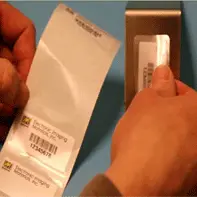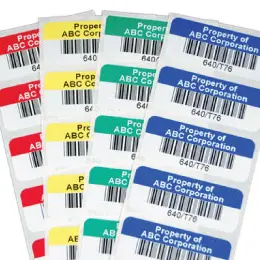
Discover how piggyback labels optimize efficiency and address specific healthcare industry challenges in this month’s Customer Spotlight!
We recently had the pleasure of working with a small, family-focused neonatology pharmaceutical company in New York. As a leader in creating critically important products for treating premature infants, their mission is to improve outcomes for premature babies and their families through innovative, non-invasive neonatal therapies.
When they approached us for a labeling solution for a new pharmaceutical trial, we were thrilled to help.
What are the Challenges of Labeling Patient Kit Boxes?
They were facing challenges in labeling their chipboard patient kit boxes and ensuring accurate information was transferred from the kit to patients’ charts. Proper labeling of patient kit boxes play a crucial role in ensuring the safety of patients. It reduces medication errors, allowing healthcare professionals to verify box contents and patient information easily, preventing mix-ups and enhancing patient safety.
But labeling patient kit boxes can be a complex task in the healthcare industry. Traditional labeling methods often involve separate adhesive labels. This can be time-consuming and prone to errors, leading to misidentification or even loss of important information. For our neonatology pharmaceutical client, there is no room for confusion or potential risks to their tiny patients!
These challenges prompted them to reach out to The Label Experts for an innovative labeling solution. After some thorough conversations to understand their requirements, we were able to provide the perfect recommendation!
The Impact of Piggyback Labels on Healthcare Accuracy
The Label Experts recommended our #630 polyester piggyback labels for the pharmaceutical company. What is a piggyback label, you ask? Piggyback labels create a double-layered effect by riding along with other labels. Unlike stacking labels, they have a 2-ply design with a top label, adhesive, and a film liner, followed by a paper liner, in which the piggyback label rests while on the roll. The bottom layer holds the top label temporarily. These labels offer flexibility and convenience for organizing and labeling items.

Ultimately, the neonatology pharmaceutical company’s clever adoption of piggyback labels has allowed them to personalize and generate their own labels, saving valuable time and resources. These labels offer a greater amount of space for comprehensive information, guaranteeing precise identification of medications and minimization of errors in their neonatal therapies.
This positive transformation not only contributes to the safety of their patients, but also streamlines neonatal therapies, leaving a profound impact on the lives of countless premature infants and their families.
Do you have a tricky healthcare labeling project that requires custom piggyback labels? The Label Experts have provided made-to-order lab labels to healthcare facilities for over 30 years! Reach out to us for help and free samples!




